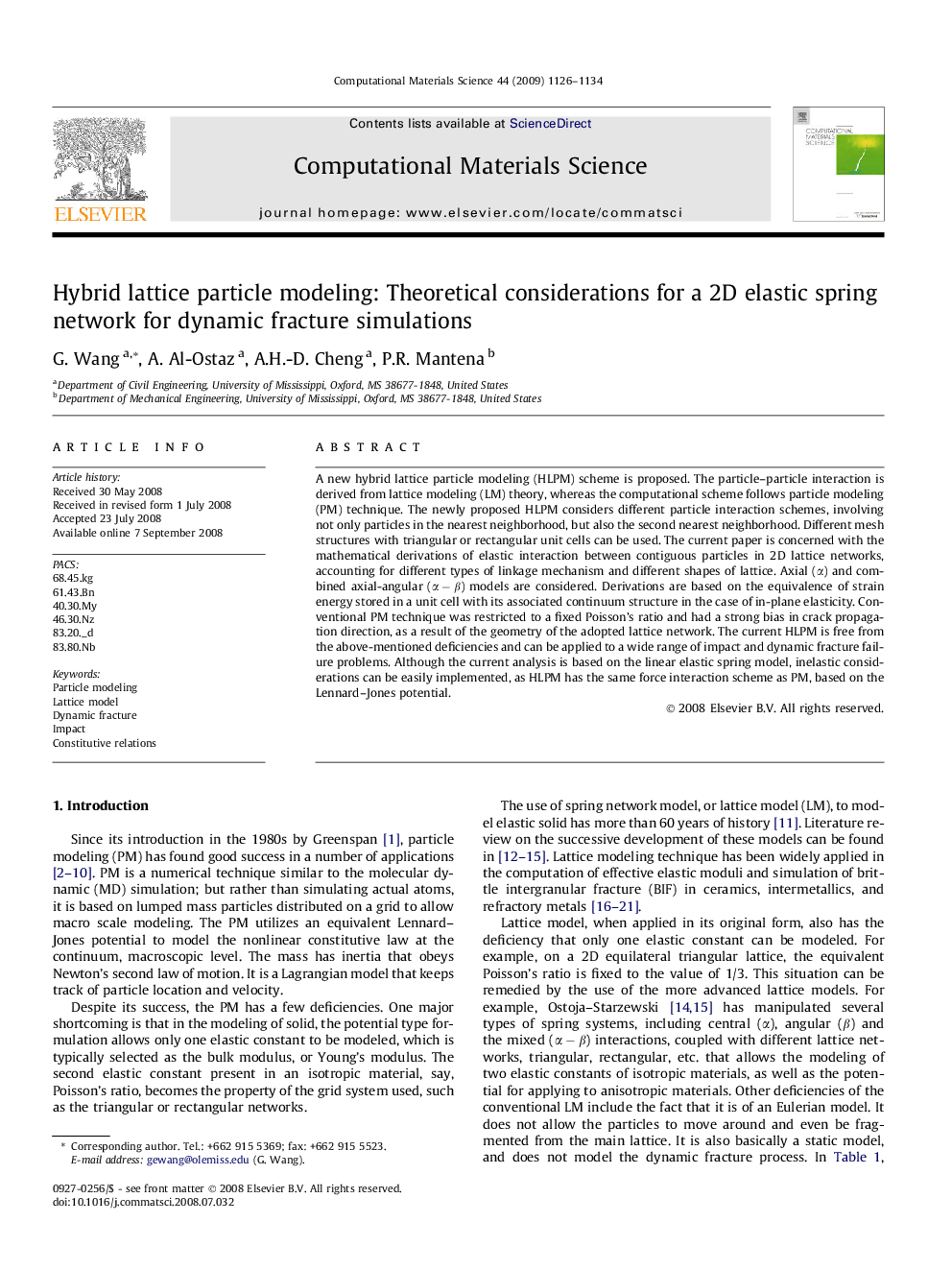| Article ID | Journal | Published Year | Pages | File Type |
|---|---|---|---|---|
| 1563888 | Computational Materials Science | 2009 | 9 Pages |
A new hybrid lattice particle modeling (HLPM) scheme is proposed. The particle–particle interaction is derived from lattice modeling (LM) theory, whereas the computational scheme follows particle modeling (PM) technique. The newly proposed HLPM considers different particle interaction schemes, involving not only particles in the nearest neighborhood, but also the second nearest neighborhood. Different mesh structures with triangular or rectangular unit cells can be used. The current paper is concerned with the mathematical derivations of elastic interaction between contiguous particles in 2D lattice networks, accounting for different types of linkage mechanism and different shapes of lattice. Axial (α) and combined axial-angular (α − β) models are considered. Derivations are based on the equivalence of strain energy stored in a unit cell with its associated continuum structure in the case of in-plane elasticity. Conventional PM technique was restricted to a fixed Poisson’s ratio and had a strong bias in crack propagation direction, as a result of the geometry of the adopted lattice network. The current HLPM is free from the above-mentioned deficiencies and can be applied to a wide range of impact and dynamic fracture failure problems. Although the current analysis is based on the linear elastic spring model, inelastic considerations can be easily implemented, as HLPM has the same force interaction scheme as PM, based on the Lennard–Jones potential.
